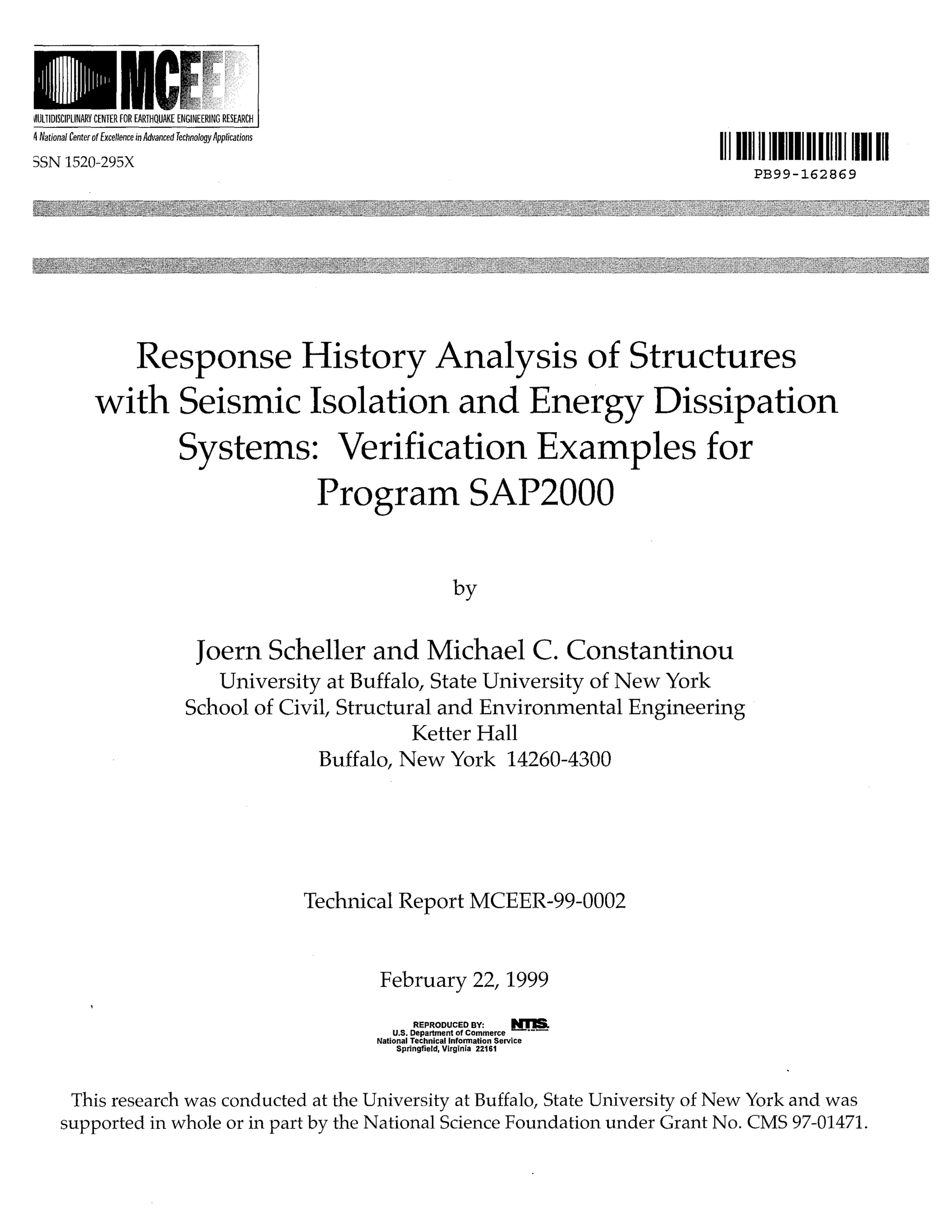This technical report presents a verification of the SAP2000 structural analysis program, focusing on its capabilities for dynamic analysis of structures with seismic isolation and energy dissipation systems. Five examples, including both seismically isolated structures and those utilizing fluid viscous dampers, are compared with experimental results and outcomes from other analysis programs, showing overall good agreement, although with some underprediction in displacement response for nonlinear viscous dampers. The research was supported by the Multidisciplinary Center for Earthquake Engineering Research and contributed to advancing earthquake engineering technology.



































































































![y
PIN (MOMENT
RELEASE) [2]
PIN (MOMENT
/
RELEASE)
~ PIN (MOMENT RELEASE)
o @ WITH ROTATIONAL SPRIN~@ @
o ®0 ®~~
0~~~~---------r~--------~~~~
r;;tm~ r.j2l', f13l ~ ~
L3J l!2J ~ , ~ ~ 14 15 ~
(3) ' @]® @
,
'_ALTERNATIVE @
LOCATION
FOR DAMPER
ELEMENT§
,,,,,,,,,,,,
@@
7~DAMPER
PIN (MOMENT , ELEMENT
RELEASE) ,
----->~ X
,,,,
4
ROTATIONAL
SPRING~
Figure 6-3 Schematic Illustrating Joints and Elements in ANSYS Model of Frame
with Rigid-Simple Connections (for coordinates and section properties
see Input File)
80](https://image.slidesharecdn.com/responsehistoryanalysisofstructuressap2000-230323074334-a3ccf302/75/Response-History-Analysis-of-Structures-SAP2000-pdf-100-2048.jpg)































